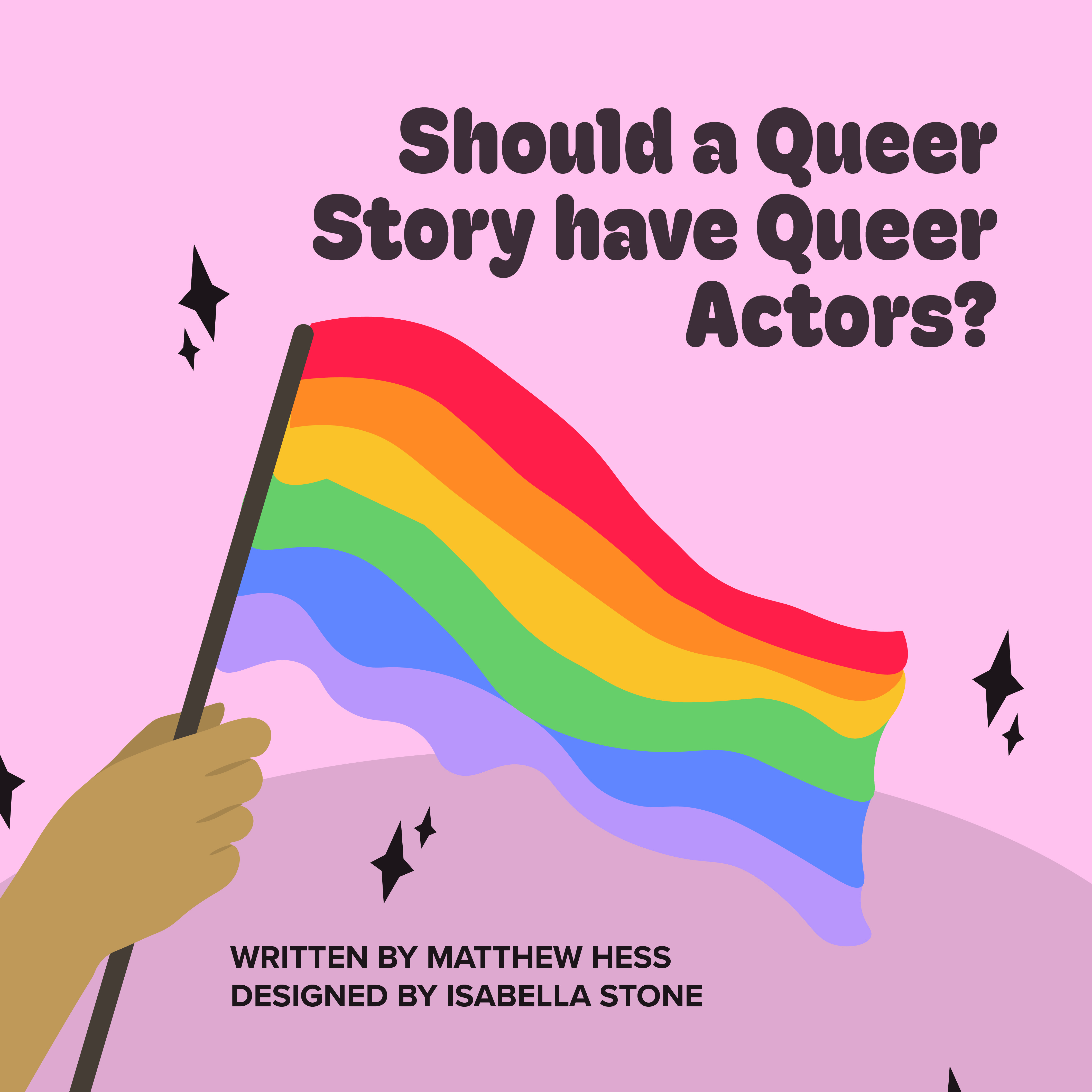
Movies and television have transitioned from the trope of randomly placing a gay person as a side character to creating full projects around queer stories. This presents an opportunity for queer people to finally see themselves in mainstream media. Since there are still relatively few queer projects and a rapidly increasing queer audience, every movie or TV show centered on queerness is idolized.
With that in mind, many people argue that the idolized actors should be authentic to the experience they are portraying. Because they are profiting off an underrepresented community, they should be part of that group to begin with. Take “Red, White & Royal Blue,” for example. One of the main actors, Nicholas Galitzine, is heterosexual. He knows that it is a controversial subject in regard to the roles he plays.
The angry reactions stem from the idea of queerbaiting, which has a very complicated definition. Harry Styles, for example, received accusations of queerbaiting due to his role challenging gender norms and silently representing himself as queer without explicitly stating such. This has allowed him to garner a large queer audience, who have worked to solidify him as a cultural icon. His brand is now extremely valuable and critics claim that he built it off a false representation of an oppressed community.
People have started to wonder if Galitzine is attempting the same thing. “Red, White & Royal Blue” is not the only queer role he has played. One of Galitzine’s first large roles was in another LGBTQ+ movie called “Handsome Devil.” This 2016 romantic comedy, now featured on Netflix, introduced his face to the queer community. His recent role as Prince Henry, however, has taken his fame to another level.
Defenders of Galitzine note that he is not abandoning the queer community with his newfound fame. He is currently in production of a mini-series where he plays another queer role. It is argued that his genuine loyalty and appreciation of the LGBTQ+ community discredit any notions of exploitation.
Online pressure played a large role in the coming out of “Heartstopper” star Kit Connor. “Congrats for forcing an 18-year-old to out himself,” he said on an Instagram story, months after the show’s first season was released. Portraying a bisexual teen on the show, some fans wanted to know if Connor was acting based on his own experiences. The question was further sought after due to his co-star Joe Locke being openly gay. Connor had not disclosed his sexuality, choosing to remain unlabeled. Eventually, enough criticism led to his coming out as bisexual.
Some argue that the debate changes with time. When the 2005 box office success “Brokeback Mountain” came out, it featured two well-known straight actors representing a gay relationship. A decade before federal law legalized gay marriage, the mainstream representation and monetary success of homosexuality startled a large portion of the nation. Both actors were constantly having to defend themselves and the morality of queerness.
In a political environment that silences queer stories and voices, it can be revolutionary having straight actors represent and defend an oppressed community. It can be understood that the heterosexual actors not only allowed for the movie to be presented in mainstream media, but it also gave the skeptics more of a reason to empathize. If two straight men can capture the brutal nature of gay love at the time, then more people will start to understand the beauty of its existence.
With that in mind, many people now point to the current status of queerness in contemporary culture. Although it is a wide range of identities that have different levels of understanding throughout the population, there is objectively more representation and acceptance than that of two decades ago. Only time will tell if Hollywood will hire actors with authentic queer experiences, or continue to represent roles independent from sexuality.